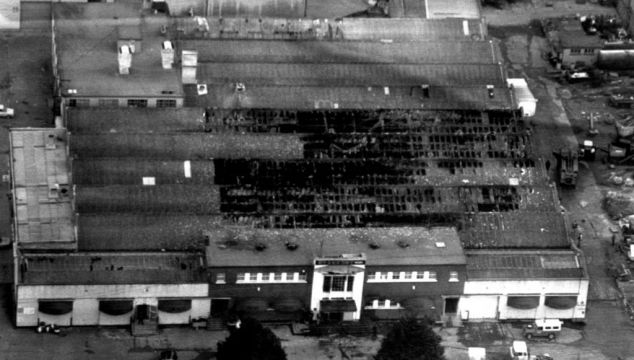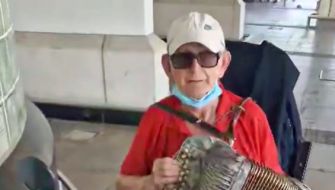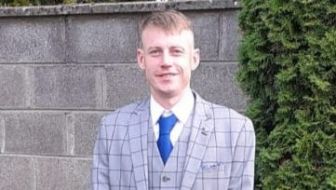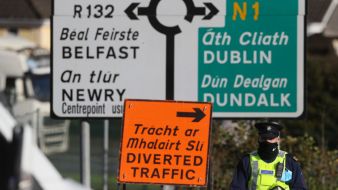A fire investigator has told an inquest it is possible that the Stardust fire could have started in a hot press, where there may have been “issues” with electrical connections to an immersion heater.
Dr Will Hutchinson also told the jury at Dublin District Coroner’s Court on Tuesday that expert research conducted at the time found the carpet tiles on the walls of the Stardust were a “critical factor” in the spread of the fire.
Giving expert opinion for a second day on Tuesday, Dr Hutchinson, who has 23 years of experience and has attended more than 1500 fire scenes, said the “most likely scenario” was that the fire either originated in the hot press and then transferred across to the West alcove where it was first observed or that the fire started in the West alcove.
However, he said there was “no evidence” of resistive heating at a socket in the West alcove which was examined following the fire and the socket pins were empty suggesting nothing had been plugged into the socket at the time of the fire.
On Tuesday the jury was shown an 18-minute video made at the time by the Fire Research Station (FRS), which recreated the conditions in the Stardust at the time of the fire, exploring why the fire spread.
Dr Hutchinson said the “critical factor”, according to the FRS special investigation, was the presence of the carpet tiles on the wall of the West alcove. Once these were burning, heat transfer increased to a point where the “spontaneous ignition” of other seats would occur. Once the seats started to ignite spontaneously, the fire would have grown and spread rapidly.
After the video was shown, Dr Hutchinson said the experts who recreated the scene in the Stardust noted that after just under two minutes, all combustible material was involved and at that point a huge amount of thick black smoke that was being produced. He said in the Stardust, that smoke would have had nowhere to go and would have filled the space in the suspended ceiling.
Dr Hutchinson today also outlined his arguments for and against the possibility of the fire starting in various locations in the club, including the roof, the ceiling void, the store room, the hot press and the West alcove.
However, he also told the jury that he is unable to determine “with any certainty” the area of origin of the fire in the Stardust nightclub because of the severe fire damage to the building and the conflicting witness evidence available.
The expert witness said the fire was first seen in the tiered seating area of the West alcove but said this does not necessarily mean this was the area of origin.
Addressing the possibility of the fire starting in the ceiling void, he said that if witness accounts and timings from outside the Stardust are to be taken as correct then this “may suggest” that the fire started within the ceiling void. The timings from people outside the club range from as early as 1.15am to 1.38am. He said if these timings are correct, it is likely that the fire started in a location other than the West alcove.
The fire was first noticed inside the club at around 1.40am.
However, he said his main difficulty with this possibility was that there were so many electrical circuits, predominantly for the lighting, in that ceiling void that any significant fire in that space would have affected the lighting and the lights would have gone out. He said there was also no fuel in this area.
The fire expert told the jury he considered it “highly unlikely” that a fire had started in the Store Room or the Lamp Room.
Exploring the possibility that the fire may have started in a hot press located in the main bar, Dr Hutchinson said the damage here indicated a fire within the hot press, rather than an external attack.
“There is a localised area of fire damage associated with the hot press which isn't present in the rest of the main bar, which is where it's located,” he said.
He noted that the hole in the ceiling above could allow the fire to spread into the roof void.
The witness said the hot press was adjacent to where the fire was first discovered in the West alcove and this could explain the unseen fire spread. Dr Hutchinson said the contents of the hot press is unknown but added it is “possible” that combustible materials were stored in the press.
He said according to the expert report compiled by Varming Mulcahy Reilly Associates (VRMA) at the time, there was possible evidence of a previous “resistive heating fault” apparent inside one of the terminal covers.
Dr Hutchinson said that, having looked at the expert reports from the time, it was “possible” that there might have been “issues” with some of the electrical connections to the immersion heaters in the hot press. The hot press contained two immersion heaters and the issue related to the upper immersion heater, the court heard.
He reminded the jury that glass washer Declan Burnett, who worked in the main bar around the time of the fire, had also reported a smell of burning rubber on occasion.
“So there is the possibility that a fire could have started within this,” he said, adding the hot press was completely enclosed in a wooden cabinet and an insulation jacket would have been wrapped around the hot water cylinder.
The expert witness described a protective end cap on the tank which protects the electrics and said experts at the time could not agree on whether or not this end cap was actually fitted to the top heating elements at the time of the fire.
Witnessses
Turning to the possibility of the fire starting in the West alcove, Dr Hutchinson said a small fire was observed here at approximately 1.40am some 25 minutes after reports of fire seen through the roof. He said a large number of witnesses inside the Stardust describe first seeing the fire in the West alcove at this time.
He said the fire was observed to have developed and spread very quickly due to the presence of carpet tiles on the walls.
The witness said the steel hangers supporting the tiles were intact after the fire and the horizontal grids at the ceiling level were “distorted” suggesting that the ceiling was heated locally and the tiles fell out.
He said the corner ceiling tiles were cut smaller, so there may have been a gap for burning droplets to fall through.
Tiles falling out of the ceiling would result in the localised mixing of smoke, giving the impression that smoke was coming from above, he added.
However, outlining the arguments against the possibility of the fire originating in the West alcove, Dr Hutchinson said the fire was observed by neighbours of the complex at around 1.15am to 1.30am either on the roof or venting through the roof.
He said the fire was observed on seating at the same time as radiant heat from above causing bouncer’s hair to singe and hands to burn.
The witness said the collapse of the suspended ceiling a few minutes after the fire was observed by patrons suggests that either the ceiling was incomplete or a fire above the ceiling compromised the suspended ceiling supports.
Exploring the possible causes of the fire, Dr Hutchinson outlined various potential risk factors including disposal of smokers material, an electrical fault and “deliberate ignition” .
In relation to deliberate ignition in the West alcove, he said ignition tests show that the intact surface of the seats cannot be ignited by a match but the polyurethane (PU) foam can be ignited by a match if the cover is cut. The witness said there was evidence in reports from the time of deliberate cutting of seat covers to expose PU foam in the Lantern Room.
He said it was not possible to start a fire from a discarded cigarette on a bench or a chair or the floor, but if a jacket or some item capable of a smouldering action was present then, he said, he could not rule out the possibility of a fire occurring.
Dr Hutchinson said that having heard the accounts of the witnesses during these inquests, he does not consider “that any new or pertinent information has come to light” in relation to the fire’s “origin or cause”. He said the witness statements taken immediately after the fire are likely to contain “more specific” and detailed information.
However, the witness said he believes the process of reviewing all the expert reports and hearing the evidence has been “hugely valuable” and has been a “worthwhile process” for the purposes of these inquests.
He said the most difficult part to explain was the evidence of a significant fire before it was noticed inside, and he highlighted evidence given by various witnesses during this fresh inquest. He noted it is “very confusing and difficult” to associate times to specific events.
He said he has based his evidence on the fact that there is no substantial material in the roof space that would sustain a fire for that amount of time.
The inquest continues on Wednesday.







